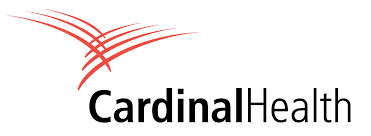
CMS 2024 Final Rule Includes Surprises, Opportunities for Pharmacies and Payers

Among health care professionals, pharmacists are best suited to serve as trusted partners for patients to help ensure they understand their medication regimen, identify medication-related problems, and work with prescribers to close gaps in care.
Pharmacists, payers and pharmacy organizations were all eagerly anticipating the release of the Center for Medicare and Medicaid Services’ (CMS) 2024 Final Rule for Medicare Advantage and Part D plans, due to numerous changes laid out in the
In the proposed rule, CMS outlined their intent to standardize and broaden the medication therapy management (MTM) program eligibility criteria, which, if finalized, was projected to generate a 2- to-3-fold increase in the volume of Medicare beneficiaries eligible for comprehensive medication reviews (CMRs) and MTM services.1 This expanded patient access would have been a potential game changer for health plan budgets and clinical program strategy.
What’s that they say about best laid plans?
When the Final Rule was
CMS stated they will address these in a subsequent final rule. Because no explanation was given for not proceeding with the proposed eligibility expansion and other changes, the door has been left open for a subsequent final rule to be released later this year.
Although the Final Rule may appear to be a bit of a reprieve for health plans worried about supporting MTM criteria expansion on a fixed budget and pharmacies worried about supporting an influx of eligible patients, it shouldn’t eliminate the need for urgency in developing and implementing new MTM strategies.
The proposed rule included a strong reinforcement from CMS, stating that they expect approximately 25% of covered beneficiaries should qualify for the MTM program while current eligibility rates hover around 8%.2 With this influx of MTM eligible patients likely to come sooner rather than later, health plans should be seeking high-quality scalable solutions to ensure their members are engaged in meaningful ways to improve medication use. Additionally, pharmacy organizations should view the coming increase of patients eligible for these services as an opportunity to prioritize strategies for ensuring best-in-class MTM practices are in place and that these practices are standardized across their store locations.
CMS clearly believes in the importance of ensuring Medicare beneficiaries have access to MTM services. A study from the Journal of the American Pharmacists Association shows MTM services may generate overall medical savings, demonstrating the value of these services.3
This study aligns with the results from various payer studies showing MTM services, such as a Comprehensive Medication Review (CMR), can drive additional value. In Outcomes’ work supporting CMRs for clients,
CMS’ continued focus on adherence creates an opportunity for health plans to reimagine their approach to these measures with an increased focus on health equity. For pharmacies, this focus is an opportunity to ensure staff are completing all available MTM services for a patient during every interaction.
Beyond the provision to standardize MTM program eligibility, CMS is moving forward with implementing risk adjustment based on sociodemographic status (SDS) characteristics—age, gender, low-income subsidy/dual eligibility status, and disability status—to the 3 Part D adherence measures for the 2028 Star Ratings (2026 measurement year) as proposed. The risk adjusted adherence measures will be on the display page for the 2026 and 2027 Star Ratings while the current adherence measures will remain included as triple-weighted Star ratings until the new measures transfer to active Star Ratings.
The final rule also solidified the proposal to decrease the weighting of the patient experience/complaints and access measures from a weight of 4 to a weight of 2 beginning with the 2024 measurement year (2026 Star ratings). CMS said the rationale for this change was due to these measures currently having undue weight in the overall Star ratings program, as they account for 58% of the total overall rating for MA-PDs in the 2023 Star ratings. The decrease in weight will lower the impact to 41% with the 2026 Star ratings, which remains significant.
For the pharmacy profession, CMS support for MTM services creates a very real opportunity to raise awareness throughout the industry and related publications to further demonstrate this value to support the desire of CMS to quantify expected savings from its Medicare MTM program. Among health care professionals, pharmacists are best suited to serve as trusted partners for patients to help ensure they understand their medication regimen, identify medication-related problems, and work with prescribers to close gaps in care.
As one of the most accessible points in the health care system, with nearly 90% of the US population living within 5 miles of a community pharmacy,4 pharmacists play an essential role in supporting best in class patient care. The collective voice and advocacy of pharmacists in support of these services is needed to provide further documentation to CMS on the value of MTM services while this window of opportunity remains open.
Rooted in the pharmacist-patient relationship, Outcomes brings together patient engagement, clinical intervention and pharmacy workflow solutions to enhance patient outcomes and empower connections across healthcare. Outcomes retains the largest, most engaged network of over 40k contracted and trained pharmacists and has reached over 80M+ patients nationwide, addressing over 289k medication therapy problems.
References
1. Centers for Medicare and Medicaid Services. Medicare Program; Contract Year 2024 Policy and Technical Changes to the Medicare Advantage Program, Medicare Prescription Drug Benefit Program, Medicare Cost Plan Program, Medicare Parts A, B, C, and D Overpayment Provisions of the Affordable Care Act and Programs of All-Inclusive Care for the Elderly; Health Information Technology Standards and Implementation Specifications. Federal Register. 2022: 17.
2. Centers for Medicare and Medicaid Services. Medicare Program; Contract Year 2024 Policy and Technical Changes to the Medicare Advantage Program, Medicare Prescription Drug Benefit Program, Medicare Cost Plan Program, Medicare Parts A, B, C, and D Overpayment Provisions of the Affordable Care Act and Programs of All-Inclusive Care for the Elderly; Health Information Technology Standards and Implementation Specifications. Federal Register. 2022: 281.
3. Isetts, BJ, Schondelmeyer, SW, Artz, MB, Lenarz, LA, Heaton, AH, Wadd, WB, Brown, LM. Cipolle, RJ. Clinical and economic outcomes of medication therapy management services: The Minnesota experience. Journal of the American Pharmacists Association. 2008;48(2):203-214.
4. Gallagher, A. Study: 88.9% of US Population Lives Within 5 Miles of a Community Pharmacy. Pharmacy Times. August 4, 2022. https://www.pharmacytimes.com/view/study-88-9-of-us-population-lives-within-5-miles-of-a-community-pharmacy.
Newsletter
Stay informed on drug updates, treatment guidelines, and pharmacy practice trends—subscribe to Pharmacy Times for weekly clinical insights.





















































































































































































































